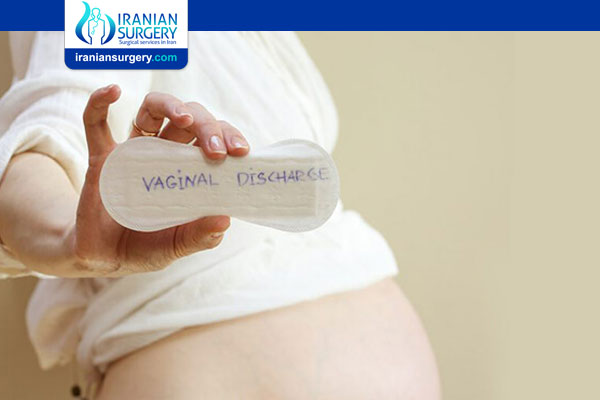Leaking Amniotic Fluid during Pregnancy
Leaking Amniotic Fluid during Pregnancy
Amniotic fluid is the warm, fluid cushion that protects and supports your baby as they grow in the womb. This important fluid contains:
. Hormones
. Immune system cells
. Nutrients
. Hormones
. Your baby’s urine
At its highest level, the amniotic fluid in your belly is around 1 quart. After 36 weeks of pregnancy, your fluid levels start to decrease as your body prepares for your baby’s delivery.
When your doctor performs ultrasounds prior to delivery, they’ll estimate the amount of amniotic fluid your baby is surrounded by. It’s possible that the fluid may start to leak at some point.
If too much fluid starts to leak out, this is known as oligohydramnios. The fluid can also gush out due to the rupturing of the amniotic sac. This is known as the rupturing of membranes.
Sometimes it can be tough to tell if the fluid you are leaking is amniotic fluid. Here’s a look at the symptoms.
What’s considered a normal level of amniotic fluid?
The amount of amniotic fluid cushioning your baby tends to increase as your pregnancy progresses, reaching its highest point at about 36 weeks.
Fluid levels throughout your pregnancy could be around:
. 60 milliliters (mL) at 12 weeks gestation
. 175 mL at 16 weeks gestation
. 400 to 1,200 mL between 34 and 38 weeks gestation
Your doctor can measure your amniotic fluid levels using an ultrasound. There are two calculations on ways to measure, known as the amniotic fluid index (AFI) or the maximum vertical pocket (MPV).
Doctors consider your fluid levels to be low if your AFI is less than 5 centimeters (cm) or your MPV is less than 2 cm.
Symptoms of amniotic fluid leakage
Think of your amniotic sac like a water balloon. While it’s possible to break the water balloon, causing a strong gush of fluid (known as your water breaking), it’s also possible that a small hole could develop in the sac. This can result in a slow leak of amniotic fluid.
When you’re pregnant, you may feel like everything leaks: Your bladder becomes fuller faster, and you may leak urine. Your vaginal tissues also may produce extra fluid to help your baby pass more easily. So it can be difficult to determine if fluid is urine, amniotic fluid, or vaginal fluid.
Amniotic fluid may have a few of the following qualities:
. Clear, white-flecked, and/or tinged with mucus or blood
. No odor
. Often saturates your underwear
Typically, urine will have an odor. Vaginal fluid is usually white or yellow in color.
Another way you can try to determine if the fluid is amniotic fluid is to first empty your bladder. Place a sanitary pad or panty liner in your underwear and examine the fluid that is on the pad after 30 minutes to an hour. If the fluid is yellow in color, it’s likely urine. If it isn’t, the fluid could be amniotic fluid.
Another option is to put on a pad or panty liner and concentrate on holding your pelvic floor muscles tight, as if you are trying to stop your urine stream. If you do this and don’t see any fluid on the pad, the fluid you are seeing is probably urine.
Risk factors for amniotic fluid leakage
Leaking amniotic fluid can be dangerous for you and your baby at any point during your pregnancy. While you may naturally leak a small amount of fluid, losing too much can be harmful.
Leaking amniotic fluid during the first and/or second trimesters can cause complications, including:
. Birth defects
. Miscarriage
. Premature birth
. Stillbirth
During the third trimester, low levels of amniotic fluid can cause:
. Difficulties during labor, such as squeezing the umbilical cord, which can affect a baby’s ability to get oxygen
. Increased risk for cesarean delivery
. Slowed growth
There are several treatments for low levels of amniotic fluid if yours has leaked too much. Your doctor can advise the best treatment option.
When to call your doctor
Call your doctor immediately if your fluid appears green-tinged or brownish yellow. This can indicate your baby has had a bowel movement in the womb, which can cause breathing complications when they are born.
You should also call your doctor if you think your membranes may have ruptured, also known as your “water breaking.” You should note the color of the discharge to tell your doctor. You’ll likely be instructed to head to the hospital.
Next steps
An estimated one-third of amniotic fluid is replaced every hour. This means your baby won’t be “dry” even if you’re leaking amniotic fluid. But it’s possible that ruptured membranes could mean your delivery is imminent and/or that bacteria could be introduced into your uterus. For this reason, it’s important to seek treatment if you think you could be leaking amniotic fluid.
Source:
. https://www.healthline.com/health/pregnancy/leaking-amniotic-fluid



2 Comments
what I do ehen wife is leakingdeopping in pregnancy? no blood but water like . some say can be sign of birth but only second trymester finished
Hello. Amniotic fluid leaks happen when a hole or slash is there in the amniotic sac. Ruptures often indicate the start of labour. This is what’s meant by “water breaking.” The rupture of the water sac is accompanied by the release of hormones and certain chemicals that cause contractions, which are felt a few hours after the rupture of the water sac. In the 34th week of pregnancy, the amount of amniotic fluid increases from 800 ml to one litre. Please check with your OBGYN ASAP.